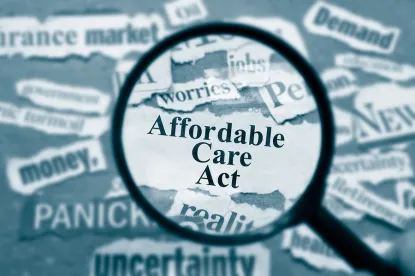In Part I of our series, we discussed what the healthcare landscape looked like before the Affordable Care Act (ACA), how the law emerged from the healthcare reform policy debates and some of the major industry developments that have occurred since the law’s enactment. Beyond some of those changes, another significant development during the same time period has been the continued effort by many Republican members of Congress to repeal the ACA, an effort that has been stymied by President Obama and Democrats in Congress. With President-elect Donald Trump entering office shortly, Republicans will soon have perhaps their best opportunity to put that effort into law, though Democrats may still be able to prevent a full repeal of the ACA. This begs an obvious question: what if Republicans are only able to repeal certain portions of the law, while leaving in place other significant provisions? What would this mean for the healthcare industry? This Part II of our blog series takes a look at some of the implications of a partial ACA repeal.
As a result of the 2016 presidential election, Republicans will soon have control of the Presidency, the House of Representatives and the Senate for the first time since the ACA’s enactment. Nevertheless, in order to pass an ACA repeal bill over an almost-certain filibuster threat from Senate Democrats, Republicans may need to use a process known as budget reconciliation, which only requires a simple majority, but only can be used to pass provisions directly affecting the budget. In fact, budget reconciliation was the legislative tool used by Senate Republicans in 2015 in a failed effort to roll back significant portions of the ACA. Accordingly, we look to the “Restoring Americans’ Healthcare Freedom Reconciliation Act of 2015” (“Reconciliation Act”) to predict what a partial repeal scenario might look like.
Legislation modeled on the Reconciliation Act would get rid of the premium and cost-sharing subsidies that currently exist in the ACA exchanges and help millions of eligible Americans afford health insurance. The expansion of Medicaid, along with the individual mandate – which takes the form of tax penalties for those who fail to maintain insurance coverage – would go by the wayside. Other taxes designed to fund ACA programs would also be eliminated. What would remain, however, are those provisions that cannot reasonably be repealed through the budget reconciliation process: the requirement that insurers not discriminate against individuals with pre-existing conditions, the prohibition on lifetime and annual caps, the ability of children to stay on their parents’ plans until age 26, various changes to Medicare and other provisions that do not directly impact the budget.
If such a bill were enacted under President Trump, the insurance market would be left with the more popular but expensive elements of the ACA, but without the funding mechanisms to offset such costs. The likely result would be the dreaded “death spiral” scenario, in which adverse selection (i.e., healthy Americans dropping coverage while sicker Americans seek or maintain insurance) leads to significant premium increases, causing further declines in coverage nationwide. Under such circumstances, one could expect to see less preventative care with a concomitant increase in patients presenting in the ER. It may be a good time to be an emergency medicine group! At the same time, cuts to Medicaid could seriously harm hospitals, providers and other participants in the healthcare space whose business models depend on the expanded Medicaid dollars available to states under the ACA. A failure to adapt quickly could be cataclysmic for such businesses.
Even in the midst of such uncertainty, however, the move towards population health management initiatives and the assumption of financial risk by providers is likely to continue. Although such developments were perhaps hastened – or at least shone brighter – in the post-ACA healthcare landscape, there is some consensus (to the extent there is concensus on anything healthcare related) around the idea that they make fundamental economic sense for all participants. Data shows that managed care, when done right, can improve health outcomes, reduce unnecessary costs and richly reward both providers and health plans. Similarly, one can reasonably expect further consolidation in the marketplace. In light of the consolidation that has occurred to date, principles of inertia and competition should drive continuation of this trend.
While the partial repeal scenario explored in this post is a definite possibility, it would be foolish to take anything for granted. Given the uncertainty engendered by the political and economic dynamics at play, all we can do is speculate. Which is exactly what we will do in our next post, in which consider another plausible scenario – full repeal and replacement of the ACA.
Part 1 - Very Opaque to Slightly Transparent: Shedding Light on Future of Healthcare
Part 3 - Exploring “Repeal and Replace”
Part 4-The ACA, Post-Inauguration
Part 5 -A Brief Overview of the American Health Care Act
Part 6-An Update on the American Health Care Act
Part 7- The Senate’s Response to the American Health Care Act
Part 8- BCRA – What Is Dead May Never Die





 />i
/>i

